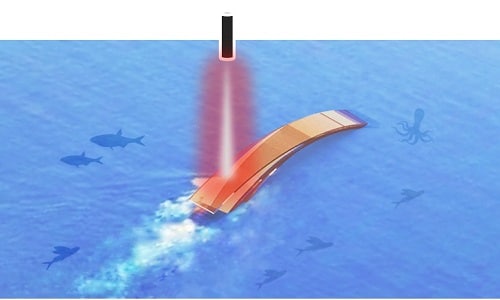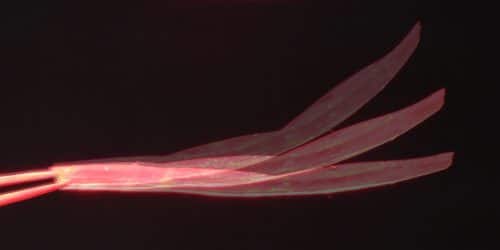The light ray powered soft and thin film robots can easily float on the water surface and and absorb oil traces – just like a vaccum cleaner

Accidental oil spillage in water bodies can lead to a huge problem and affect the entire marine ecosystem including sea creatures and birds for a long time.
Even humans exposed to crude oil can come across severe health effects.
Several types of equipment such as skimmers, sorbents and oil booms can clean up the oil spills on water. But the removal process is a bit challenging to perform in disparate climate zones as cleanup ships that are often sent for such operations perform cleaning manually.
Now, researchers at the University of California, Riverside have devised soft, thin robots called Neusbots that can float on water and autonomously clean oil spills in remote seas. These thin-film robots are powered by light and water.
They can also be trained to remove contaminants from drinking water.
“Our motivation was to make soft robots sustainable and able to adapt on their own to changes in the environment. If sunlight is used for power, this machine is sustainable, and won’t require additional energy sources,” said UCR chemist Zhiwei Li. “The film is also re-usable.”
Some films bend in response to light. But unlike Neusbot, others cannot be adjusted as per varying mechanical oscillations. This adjustment allows the robot to be controlled and operated wherever required.

Operates like steam engine
The Neusbot features three layers.
“There aren’t many methods to achieve this controllable movement using light. We solved the problem with a tri-layer film that behaves like a steam engine,” Li explained.
Similar to steam powering the motion of steam engines, light rays act as a power source to the Neusbot. By changing the angle of the light source, the Neusbot can swim in any direction instead of just moving in the forward direction.
The porous middle layer of the film consists of water along with iron oxide and copper nanorods, which convert light energy into heat. The vaporised water then results in pulsed motion across the water’s surface.
The hydrophobic nature of the film’s bottom layer prevents it to absorb water and sink beneath. Additionally, the nanomaterials can withstand high salt concentrations without damage.
To make the robot even more powerful, the research team wishes to add a fourth layer that could absorb oil or other chemicals.
They would also like to try and control its oscillation mode more precisely and give it the capability for even more complex motion.






